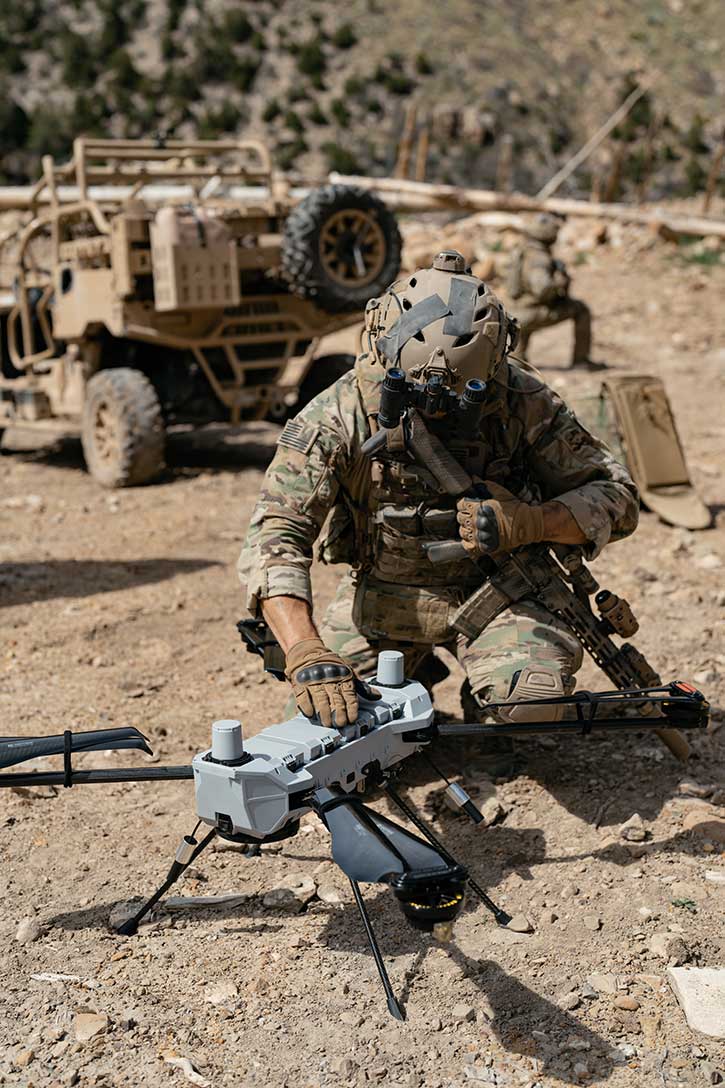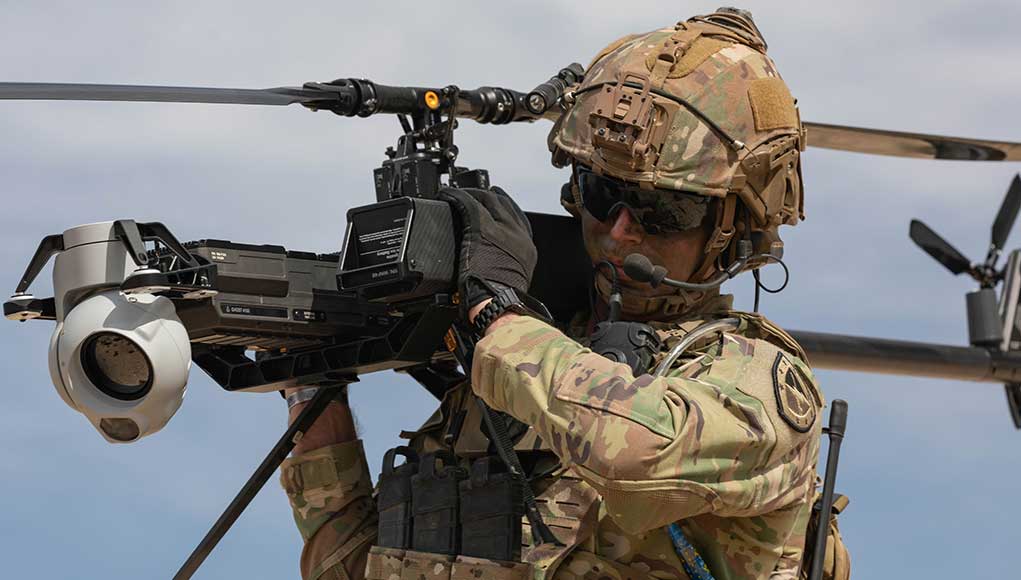The U.S. Army has taken a significant step forward in modernizing its reconnaissance and surveillance capabilities at the company level. In a recent announcement, the Army revealed its selection of two Small Uncrewed Aircraft Systems (SUAS) to meet its Company-Level Small Uncrewed Aircraft System Directed Requirement.
The chosen systems are the Ghost X, developed by Anduril Industries, and the C-100 UAS from Performance Drone Works (PDW). This selection marks the first tranche of the Directed Requirement (DR), with a contract value of $14.417 million. The Army will acquire these systems through the Defense Logistics Agency’s Tailored Logistics Support 10-Year Indefinite Delivery Indefinite Quantity (IDIQ) contract.
The Company Level SUAS DR, approved in June 2023, aims to equip maneuver companies with rapidly reconfigurable and attritable payload systems. These drones will enhance the Army’s ability to conduct reconnaissance, surveillance, and target acquisition missions at the company level. The selection of commercial off-the-shelf systems is designed to meet immediate operational needs while informing future requirements.

Notably, the Army received additional funding from the Defense Innovation Unit (DIU) to accelerate this program. Both selected systems have been vetted for compliance with the 2020 National Defense Authorization Act. They are listed on DIU’s Blue List of commercial UAS technology approved for Department of Defense use.
“The Directed Requirement for a Company Level Small UAS capability is a priority requirement based on observations from the ongoing conflicts in Ukraine and Gaza,” said Gen. James Rainey, Commanding General of U.S. Army Futures Command. “This requirement describes the importance of considering the UAS as a system, not just an air vehicle, and highlights the importance of adaptability.” The rapid selection process, completed within five months of the initial notification, demonstrates the Army’s commitment to agile acquisition in emerging technology areas.
This development is seen as a prime example of the Army’s efforts to transform its capabilities rapidly, putting new technology in the hands of soldiers for experimentation and innovation. It also showcases the effective partnership between the Army and DIU in bringing commercial technology into military use to meet high-priority requirements.




















